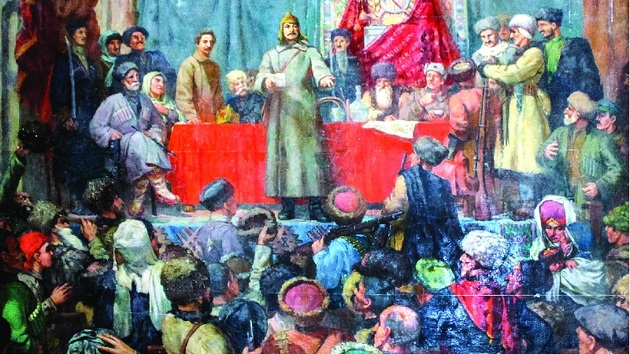This year marks 100 years since the founding of the Dagestan Autonomous Soviet Socialist Republic (DASSR). The corresponding decree was issued on January 20, 1921. This day, according to many historians and politicians, became the starting point for a new stage for the Dagestani peoples.
In November 1920, about 300 delegates and representatives of the districts participated in the Extraordinary Congress of the Peoples of Dagestan which took place in Temir-Khan-Shura. At the congress, on behalf of the Soviet government, the People's Commissar for Nationalities of the RSFSR Joseph Stalin announced a declaration on Soviet autonomy for Dagestan. He said that now the Soviet government had the opportunity to tackle the urgent domestic issues, including the implementation of national policy, and therefore the time had come to announce that “Dagestan must be autonomous, to enjoy internal self-government, while maintaining fraternal ties with the peoples of Russia. Dagestan should be governed according to its peculiarities, its way of life, customs, as well as the Sharia, which is of great importance for the Dagestani peoples. "
“The Soviet government has a specific goal - to select from among local workers honest and loyal people who love their land and entrust them with all the governing bodies of Dagestan, both economic and administrative. The Soviet government is the first government that gives Dagestan autonomy. We hope that the peoples of Dagestan will justify the confidence of the Soviet government. Long live the alliance of the peoples of Dagestan with the peoples of Russia! Long live the Soviet autonomy of Dagestan!” Stalin concluded.
Grigory Ordzhonikidze, who headed the North Caucasian Revolutionary Committee at that time, said that the Soviet Dagestan Republic differs from the mountain bourgeois republic as it liberates the peoples of the mountains "from the power of adventurers, from the power of oppressors, from Tarkovs and Turks invited by them, from Halils and invited by them Englishmen ". "The Soviet Republic transfers power and land to the poor, secures to you all your gains in the revolution, gives you all the means to defend these gains. The Soviet Republic does not separate you from the new Russia, does not transfer you to the Turks or the British. The Soviet Republic binds you to free workers and peasants of other peoples of Russia as equals, " Ordzhonikidze said.
At the Extraordinary Congress of the Peoples of Dagestan, a delegation was elected for a trip to Moscow, consisting of Dzhelal-ed Din Korkmasov, Alibek Taho-Godi, Said Gabiev, in order to develop, together with representatives of the All-Russian Central Executive Committee, the main provisions of the decree on the formation of the Dagestan Autonomous Soviet Socialist Republic. It also participated in the development of the draft Constitution of the DASSR.
According to the decree of the All-Russian Central Executive Committee on January 20, 1921, the Avar, Andean, Gunibsky, Darginsky, Kazikumukhsky, Kaitago-Tabasaransky, Kyurinsky, Samursky, Temir-Khan-Shurinsky, Khasavyurt districts and the territory of the Caspian coast entered the Dagestan ASSR. Later, the Nogaysky, Tarumovsky and Kizlyarsky districts were transferred to the Dagestan ASSR.
The supreme governing bodies of the republic were also formed - the Central Executive Committee and the Council of People's Commissars. Nazhmudin Samursky was elected chairman of the CEC, and Korkmasov headed the first government of the republic. On December 5, 1921, the first Constitution in the history of the republic was adopted at the All-day Constituent Congress of the Soviets.
This event marked the final victory of the Soviet regime in Dagestan. The acquisition of statehood within Russia became the main economic and cultural development of the DASSR.






